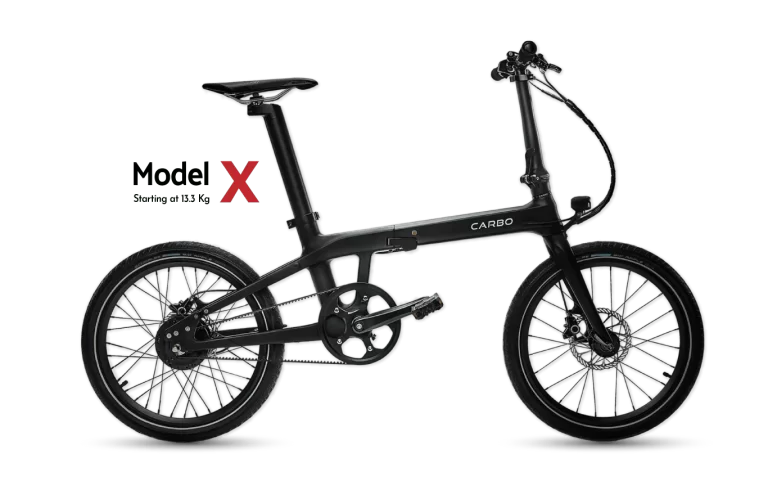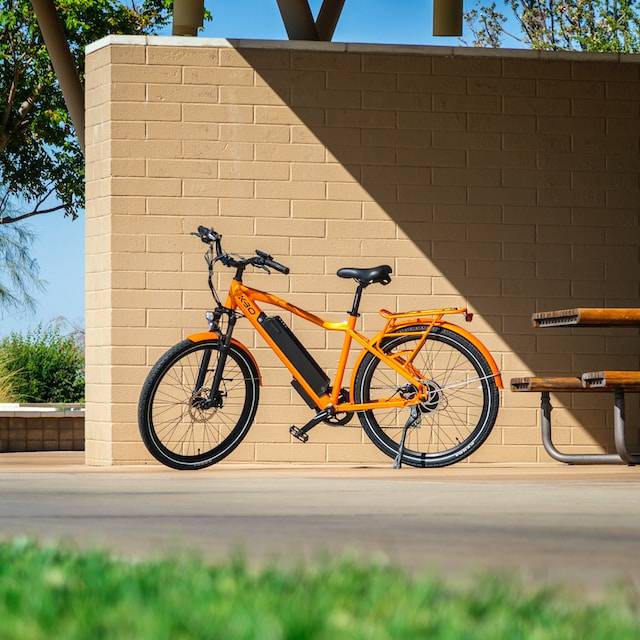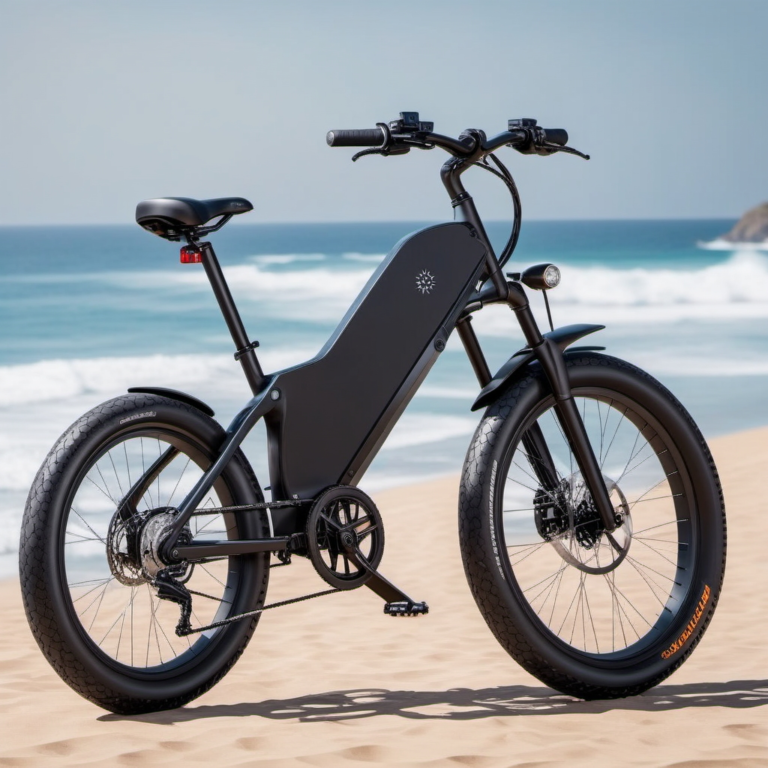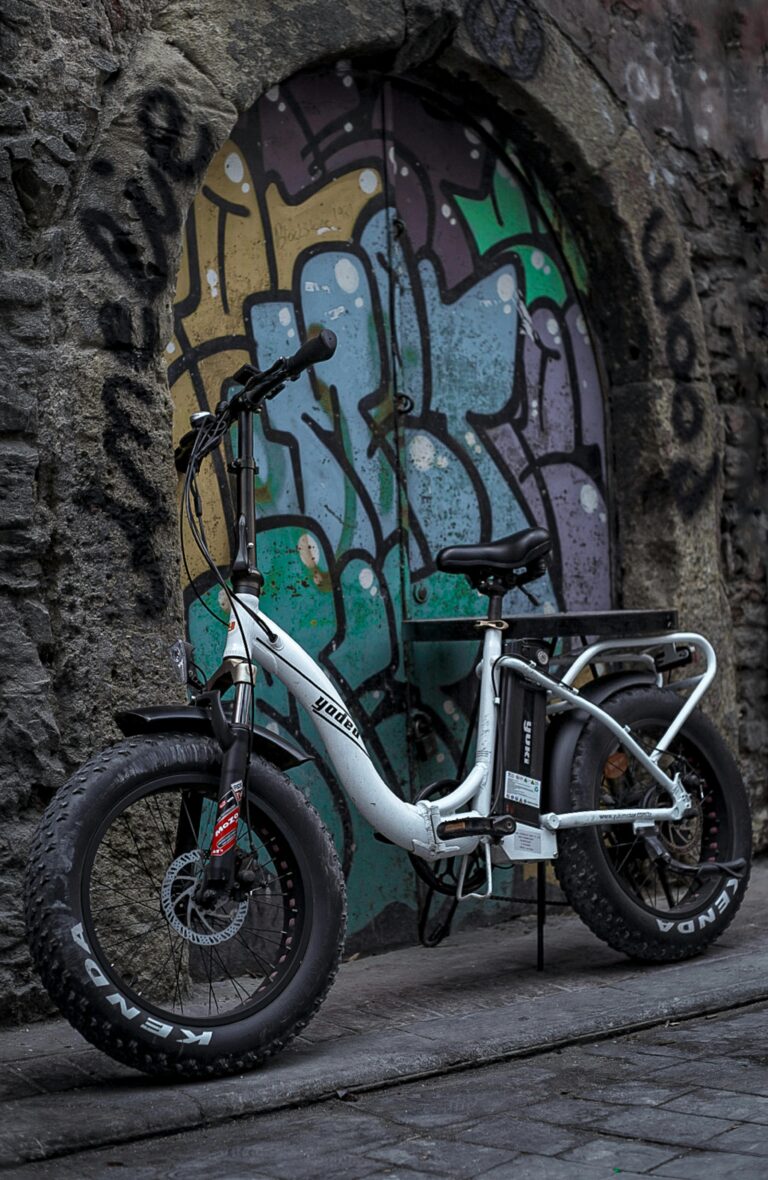The Ultimate Guide to Electric Bike GPS: Navigate Your Way to Adventure
In recent years, the cycling world has witnessed a remarkable surge in the popularity of electric bikes, or e-bikes, as they offer an innovative solution to urban commuting, recreational riding, and even long-distance touring. With their pedal-assist or throttle-driven motors, e-bikes have revolutionized the way people experience cycling, attracting riders of all ages and abilities.
Amidst this e-bike revolution, the integration of GPS navigation technology has emerged as a game-changer for enthusiasts seeking to explore new horizons and navigate with confidence. Whether embarking on a leisurely weekend ride through scenic landscapes or tackling urban streets during rush hour, having reliable GPS navigation on your electric bicycle can elevate your riding experience to new heights.
Beyond the convenience of getting turn-by-turn directions, the importance of GPS navigation for e-bike enthusiasts extends to enhancing safety on the road. With real-time tracking capabilities and route planning functionalities, electric bike GPS systems empower riders to stay informed about their surroundings, avoid potential hazards, and navigate efficiently to their destinations. In an era where road safety is paramount, having access to accurate GPS guidance can provide peace of mind and promote responsible riding habits.
As we delve deeper into the realm of electric bike GPS, we’ll explore the myriad benefits, features, and considerations associated with this technology. From choosing the right GPS device for your e-bike to mastering its use effectively, join us on a journey to unlock the full potential of electric bike navigation and embark on memorable adventures with confidence and ease.
Key Takeaways
- The right electric bike GPS can enhance your riding experience by providing accurate navigation and safety features.
- Consider factors like compatibility, durability, and battery life when choosing a GPS device for your e-bike.
- Look for features such as offline maps, turn-by-turn navigation, and real-time tracking to optimize your ride.
- Explore different GPS options tailored to your specific riding needs, whether it’s urban commuting, off-road adventures, or long-distance touring.
- Master the use of electric bike GPS with practical tips and best practices for effective navigation and route planning.
- Stay informed by researching reputable external sources and expert reviews to make informed decisions about electric bike GPS technology.
- Embrace the convenience and safety benefits of GPS navigation to unlock new adventures and explore with confidence on your electric bike.
Understanding Electric Bike GPS:
Electric bike GPS represents a specialized branch of navigation technology tailored specifically to the needs and requirements of electric bicycle riders. Unlike traditional GPS systems designed for general use, electric bike GPS integrates unique features and functionalities to cater to the distinct demands of e-bike enthusiasts.
At its core, electric bike GPS encompasses a range of navigation tools and technologies that enable riders to plan routes, track their progress, and navigate safely and efficiently while on the road. These GPS systems are optimized to accommodate the dynamic nature of electric bike riding, offering enhanced accuracy, durability, and user-friendly interfaces.
One of the key distinctions between electric bike GPS and traditional GPS systems lies in their compatibility with e-bike hardware and software. Electric bike GPS devices are designed to seamlessly integrate with the electronic components of e-bikes, such as the display units, motor controllers, and battery systems. This integration enables riders to access GPS navigation directly from their e-bike’s dashboard or handlebar-mounted display, eliminating the need for separate devices or smartphone apps.
Furthermore, electric bike GPS systems often incorporate specialized features tailored to the unique needs of e-bike riders. These features may include:
- Battery Monitoring: Electric bike GPS devices may provide real-time monitoring of battery status and power consumption, allowing riders to optimize their routes and conserve battery life during longer rides.
- Route Planning: Many electric bike GPS systems offer advanced route planning functionalities, allowing riders to customize their routes based on factors such as terrain, distance, and preferred road types. These tools enable riders to discover new routes, avoid traffic congestion, and explore scenic landscapes with ease.
- Safety Alerts: Electric bike GPS systems may include safety features such as proximity alerts, speed limit notifications, and collision warnings to help riders navigate safely and avoid potential hazards on the road.
- Integration with E-bike Systems: Electric bike GPS devices often integrate seamlessly with other e-bike systems, allowing riders to control navigation functions directly from their e-bike’s display unit or handlebar controls. This integration enhances user convenience and ensures a seamless riding experience.
By understanding the intricacies of electric bike GPS technology and its unique features, riders can harness the full potential of navigation tools designed specifically for the dynamic world of e-bike riding. Whether embarking on a daily commute or embarking on a cross-country adventure, electric bike GPS empowers riders to navigate confidently and explore new horizons with ease.
RELATED CONTENT – Bike to Bike Communication for Electric Bikes
RELATED CONTENT – Enhance the Comfort of Long Electric Bike Rides
Choosing the Right Electric Bike GPS:
Selecting the perfect GPS for your electric bike entails careful consideration of various factors to ensure compatibility, durability, and optimal performance. With a plethora of options available on the market, understanding these key considerations can help you make an informed decision that aligns with your specific riding needs and preferences.
Factors to Consider:
Compatibility: When choosing an electric bike GPS, compatibility with your e-bike’s hardware and software is paramount. Ensure that the GPS device is compatible with your e-bike’s display unit, motor controller, and battery system to seamlessly integrate navigation functionalities into your riding experience.
Durability: Electric bike GPS systems are exposed to the elements and may endure vibrations and impacts while riding. Opt for a GPS device that boasts rugged construction and weatherproofing to withstand the rigors of outdoor cycling, ensuring longevity and reliability in diverse environmental conditions.
Battery Life: Evaluate the battery life of the GPS device to ensure it meets your riding requirements. Longer battery life allows for extended usage without the need for frequent recharging, ensuring uninterrupted navigation during longer rides or multi-day adventures.
Types of GPS Devices:
Handlebar-Mounted Units: Handlebar-mounted GPS units are dedicated devices designed specifically for navigation on bicycles. These units typically feature compact designs, bright displays, and intuitive interfaces optimized for easy viewing and operation while riding. Handlebar-mounted GPS units offer standalone navigation capabilities, eliminating the need for a smartphone or separate app.
Smartphone Apps: Alternatively, riders can utilize smartphone apps for GPS navigation on their electric bikes. These apps leverage the GPS capabilities of smartphones to provide turn-by-turn directions, route planning, and real-time tracking functionalities. Smartphone apps offer versatility and convenience, allowing riders to utilize familiar devices for navigation without the need for additional hardware.
Comparison:
Handlebar-mounted GPS units offer dedicated navigation functionalities and robust performance tailored specifically for cycling, making them an ideal choice for riders seeking a standalone solution with enhanced reliability and ease of use. However, they may require a separate investment and lack the versatility of smartphone apps for other activities.
On the other hand, smartphone apps provide a cost-effective and versatile solution for GPS navigation on electric bikes, leveraging the existing hardware of smartphones to deliver navigation capabilities without the need for additional devices. While smartphone apps offer convenience and familiarity, they may be subject to limitations such as battery drain, reliance on cellular coverage, and potential distractions from incoming notifications.
Ultimately, the choice between handlebar-mounted GPS units and smartphone apps depends on individual preferences, budget considerations, and the desired level of functionality and integration with other e-bike systems. By carefully evaluating these factors and weighing the pros and cons of each option, riders can select the right electric bike GPS system that enhances their riding experience and facilitates seamless navigation on every journey.
RELATED CONTENT – Review of the Mokwheel Asphalt Electric Bike
RELATED CONTENT – Mokwheel Obsidian Electric Bike
Top Five Electric Bike GPS Options:
- Garmin Edge 830:
- Features: High-resolution color touchscreen, turn-by-turn navigation, advanced performance monitoring, compatibility with e-bike sensors, incident detection, and compatibility with Varia rearview radar.
- Specs: Dimensions: 1.9″ x 3.2″ x 0.8″, Weight: 79.1 grams, Battery Life: Up to 20 hours.
- Pros: Intuitive interface, extensive performance metrics, excellent navigation features, rugged and durable design.
- Cons: Higher price point, occasional connectivity issues with sensors.
- Specific Needs: Ideal for serious cyclists and enthusiasts seeking advanced navigation and performance monitoring capabilities.
- User Review Statements:
- “The Garmin Edge 830 has revolutionized my rides. Its navigation features are incredibly accurate, and I love the performance metrics it provides.”
- “Easy to set up and use, the touchscreen is responsive even with gloves on. Battery life is impressive, making it perfect for long rides.”
- Price Range: $399.99 – $499.99.
- Where to Purchase: Available on Garmin’s official website, Amazon, and cycling retailers.
- Wahoo Elemnt Bolt GPS Bike Computer:
- Features: Aerodynamic design, LED indicators for turn-by-turn navigation, compatibility with various e-bike sensors, smartphone integration, and live tracking.
- Specs: Dimensions: 2.9″ x 1.8″ x 0.87″, Weight: 62 grams, Battery Life: Up to 15 hours.
- Pros: Sleek and compact design, easy setup and customization, reliable navigation performance, long battery life.
- Cons: Limited onboard navigation features compared to competitors, lacks a touchscreen interface.
- Specific Needs: Suited for cyclists prioritizing aerodynamics and simplicity without compromising on navigation accuracy and connectivity.
- User Review Statements:
- “The Wahoo Elemnt Bolt is a game-changer for my rides. Its compact design reduces drag, and the LED indicators make navigation a breeze.”
- “Simple setup and integration with my smartphone. Battery life is excellent, and it reliably tracks my rides every time.”
- Price Range: $229.99 – $249.99.
- Where to Purchase: Available on Wahoo’s official website, Amazon, and cycling retailers.
- Hammerhead Karoo 2:
- Features: High-resolution color touchscreen, offline maps, turn-by-turn navigation, ANT+ and Bluetooth sensor compatibility, Strava Live Segments, and customizable data fields.
- Specs: Dimensions: 98mm x 84mm x 18mm, Weight: 132 grams, Battery Life: Up to 15 hours.
- Pros: Stunning display, robust navigation features, extensive customization options, seamless integration with third-party platforms.
- Cons: Relatively bulky design, occasional software bugs requiring updates.
- Specific Needs: Suited for tech-savvy cyclists and adventurers seeking a highly customizable GPS device with advanced navigation capabilities.
- User Review Statements:
- “The Hammerhead Karoo 2 is a powerhouse. Its display is crystal clear, and the offline maps have been a lifesaver on remote rides.”
- “Customizing data fields is a breeze, and the navigation is top-notch. Despite a few software glitches, it’s been a reliable companion on all my rides.”
- Price Range: $399.99.
- Where to Purchase: Available on Hammerhead’s official website and select cycling retailers.
- Lezyne Mega XL GPS Bike Computer:
- Features: Large high-resolution display, turn-by-turn navigation, compatibility with e-bike sensors, ANT+ and Bluetooth connectivity, and long battery life.
- Specs: Dimensions: 57.5mm x 78.3mm x 26.6mm, Weight: 83 grams, Battery Life: Up to 48 hours.
- Pros: Impressive battery life, easy-to-read display, accurate navigation, durable construction.
- Cons: Limited onboard mapping compared to competitors, user interface can be challenging for some.
- Specific Needs: Ideal for riders prioritizing battery life and durability for long-distance touring and multi-day adventures.
- User Review Statements:
- “The Lezyne Mega XL is a beast when it comes to battery life. Its display is crystal clear even in bright sunlight, and the navigation is spot-on.”
- “Setup was straightforward, and the device feels sturdy. While the interface takes some getting used to, it’s worth it for the battery longevity.”
- Price Range: $199.99 – $249.99.
- Where to Purchase: Available on Lezyne’s official website, Amazon, and cycling retailers.
- Bryton Rider 420 GPS Bike Computer:
- Features: Large display with customizable data fields, turn-by-turn navigation, ANT+ and Bluetooth sensor compatibility, and long battery life.
- Specs: Dimensions: 49.9mm x 83.9mm x 16.9mm, Weight: 67 grams, Battery Life: Up to 35 hours.
- Pros: Affordable price point, intuitive interface, accurate navigation, extensive battery life.
- Cons: Limited onboard mapping options, lacks advanced performance metrics.
- Specific Needs: Suited for budget-conscious cyclists seeking reliable navigation and essential ride tracking features.
- User Review Statements:
- “The Bryton Rider 420 is a fantastic value for the price. Its navigation is straightforward, and the battery life is impressive.”
- “Setup was a breeze, and the device is lightweight. While it lacks some advanced features, it’s perfect for my everyday rides.”
- Price Range: $129.99 – $149.99.
- Where to Purchase: Available on Bryton’s official website, Amazon, and cycling retailers.
Note: Prices may vary based on retailer and region.
RELATED CONTENT – Electric Bikes with Long Battery Life
How to Use Electric Bike GPS Effectively:
Mastering the art of using electric bike GPS effectively is essential for maximizing your riding experience and ensuring seamless navigation on every journey. Whether you’re a beginner or a seasoned rider, implementing practical tips and best practices can enhance your confidence and efficiency when utilizing GPS technology on your electric bike.
Setting Up the Device:
- Familiarize yourself with the user manual of your electric bike GPS device to understand its features, functions, and settings.
- Ensure that the GPS device is securely mounted on your e-bike’s handlebars or dashboard, providing clear visibility without obstructing your view of the road.
- Take the time to customize the device settings according to your preferences, such as display brightness, map orientation, and audible alerts.
Planning Routes:
- Utilize the route planning functionalities of your electric bike GPS to tailor your rides based on factors such as distance, terrain, and points of interest.
- Take advantage of online mapping platforms or companion smartphone apps to pre-plan routes and sync them with your GPS device for seamless navigation on the go.
- Consider incorporating scenic routes, bike paths, and designated cycling trails into your itinerary to enhance your riding experience and explore new destinations.
Navigating Safely:
- Prioritize safety while navigating with your electric bike GPS by keeping your focus on the road and periodically checking the device for upcoming turns and route guidance.
- Stay aware of your surroundings and adhere to traffic laws and regulations, especially when navigating through urban areas or crossing intersections.
- Use caution when adjusting settings or interacting with the GPS device while riding, ensuring that your attention remains on the road and potential hazards.
Optimizing Battery Usage:
- Maximize the battery life of your electric bike GPS by adjusting settings such as screen brightness, backlight duration, and interval for GPS updates.
- Consider disabling unnecessary features or sensors when not in use to conserve battery power and extend the runtime of your GPS device during longer rides.
- Carry a portable power bank or spare batteries as a backup to ensure uninterrupted navigation in case of unexpected battery depletion.
Troubleshooting Common Issues:
- Stay informed about common issues and troubleshooting techniques related to electric bike GPS devices, such as GPS signal loss, software glitches, or connectivity issues.
- Regularly update the firmware and software of your GPS device to ensure optimal performance and compatibility with the latest features and enhancements.
- Refer to the user manual, online forums, or manufacturer support resources for guidance on resolving specific issues or technical challenges encountered during operation.
By implementing these practical tips and best practices, you can harness the full potential of electric bike GPS technology to navigate confidently, explore new routes, and embark on memorable adventures with ease and peace of mind.
FAQs
1. How do I mount the electric bike GPS device on my e-bike?
- Mounting your electric bike GPS device is typically straightforward and varies depending on the specific model. Most GPS units come with mounting hardware or accessories designed to attach securely to your e-bike’s handlebars or stem. Follow the manufacturer’s instructions provided with your GPS device for proper installation. Ensure that the device is positioned in a location that provides clear visibility while riding without obstructing your view or interfering with other components on your bike.
2. Is the electric bike GPS device waterproof?
- The waterproofing of electric bike GPS devices varies depending on the manufacturer and model. Many GPS units are designed to withstand exposure to water and inclement weather conditions, featuring water-resistant or IPX-rated enclosures to protect against moisture ingress. However, it’s essential to review the specifications and waterproofing capabilities of your GPS device to ensure it meets your needs and can withstand the environmental conditions encountered during your rides.
3. How do I update maps on my electric bike GPS device?
- Updating maps on your electric bike GPS device typically involves connecting the device to a computer or smartphone and using proprietary software provided by the manufacturer. Some GPS units may offer over-the-air (OTA) map updates via Wi-Fi or cellular connectivity. Check the manufacturer’s website or user manual for instructions on how to download and install map updates for your specific GPS device. Ensure that you regularly update maps to access the latest navigation data, including new roads, points of interest, and route optimizations.
4. What should I do if I experience poor GPS signal on my electric bike GPS device?
- Poor GPS signal reception can occur due to various factors, including obstruction from buildings or terrain, interference from electronic devices, or atmospheric conditions. If you experience poor GPS signal on your electric bike GPS device, try the following troubleshooting steps:
- Ensure that the GPS antenna on your device is unobstructed and positioned for optimal signal reception.
- Move to an open area with a clear view of the sky to improve satellite connectivity.
- Restart your GPS device to refresh its signal acquisition process.
- Update the firmware and software of your GPS device to address any known issues or bugs affecting GPS performance.
- If the problem persists, contact the manufacturer’s customer support for further assistance or consider using an external GPS antenna or signal booster to enhance signal strength.
5. How can I optimize battery usage on my electric bike GPS device?
- To optimize battery usage on your electric bike GPS device and prolong its runtime during rides, consider implementing the following tips:
- Adjust screen brightness and backlight settings to minimize power consumption without compromising visibility.
- Disable unnecessary features or sensors when not in use, such as Bluetooth connectivity or live tracking, to conserve battery power.
- Close background apps or processes on your GPS device that may drain battery life unnecessarily.
- Carry a portable power bank or spare batteries as backup to ensure uninterrupted navigation in case of battery depletion during longer rides.
- Regularly charge your GPS device before rides and consider using a dedicated charger or power source to ensure full battery capacity.
By addressing these common questions and providing troubleshooting tips for electric bike GPS devices, riders can navigate with confidence and overcome potential challenges encountered during their cycling adventures.
Conclusion
In conclusion, electric bike GPS technology has revolutionized the way riders navigate, explore, and experience the world on two wheels. From urban commutes to off-road adventures, the integration of GPS navigation systems into electric bicycles offers convenience, safety, and endless possibilities for discovery.
By understanding the intricacies of electric bike GPS devices, selecting the right option to suit your needs, and mastering effective navigation techniques, riders can unlock new horizons and embark on memorable journeys with confidence and ease.
As you continue your exploration of electric bike GPS technology, we encourage you to leverage the wealth of resources available, from expert reviews and comparison guides to manufacturer websites and user forums. Stay informed, stay curious, and never stop pedaling towards new adventures.
We invite you to join the conversation and share your thoughts, experiences, and questions about electric bike GPS in the comments section below. Have you tried any of the GPS devices mentioned? Do you have tips or tricks for optimizing navigation on your electric bike? Let us know, and together, let’s inspire and empower each other to ride further, explore more, and embrace the freedom of electric biking with GPS technology. Don’t forget to share this guide with fellow riders who may benefit from the insights shared here. Happy riding!
External Sources
For readers eager to delve deeper into the realm of electric bike GPS technology and gain additional insights, a wealth of reputable external sources and informative resources are readily available. Whether you’re seeking expert reviews, comprehensive comparison guides, or in-depth manufacturer information, the following sources offer valuable perspectives and guidance to enhance your understanding and decision-making process:
Expert Reviews:
- DC Rainmaker: Renowned for its detailed and unbiased reviews of sports technology products, DC Rainmaker provides comprehensive assessments of various electric bike GPS devices, highlighting key features, performance metrics, and real-world testing results.
- BikeRadar: A leading authority in the cycling industry, BikeRadar offers insightful reviews and hands-on evaluations of electric bike GPS systems, providing valuable insights into usability, durability, and performance under different riding conditions.
Comparison Guides:
- Cycling Weekly: Cycling Weekly publishes comprehensive comparison guides and round-up articles that highlight the pros, cons, and standout features of popular electric bike GPS devices, helping readers make informed decisions based on their specific riding needs and preferences.
Manufacturer Websites:
- Garmin: Explore Garmin’s official website for detailed product specifications, user manuals, and software updates for their range of electric bike GPS devices, including the popular Edge series and Varia radar systems.
- Wahoo Fitness: Visit Wahoo Fitness’ official website to learn more about their innovative GPS bike computers, such as the Elemnt Bolt and Elemnt Roam, and discover compatibility with e-bike sensors and third-party platforms.
Kristina Grant is not just an enthusiast but a true authority on electric bikes. Nestled in the coastal beauty of Virginia, Kristina has found the perfect backdrop for her passion for electric biking. As a dedicated wife and homeschooling mom, her life revolves around family, faith, and the thrill of adventure.
Originally hailing from Ohio, Kristina's journey with electric bikes began as a curiosity and quickly evolved into a deep expertise. Her blog is a testament to her love for electric biking, combining her fascination for eco-friendly transportation with her coastal lifestyle.
When she's not cruising the beach on her electric bike, you'll find Kristina indulging in her other loves: long walks along the shore, getting lost in a good book, and cherishing moments with her loved ones. With a heart as big as her love for animals, especially cats, Kristina brings a unique perspective to the electric bike world, grounded in her strong faith in God and her dedication to a sustainable lifestyle.
Through her blog, Kristina shares her extensive knowledge of electric bikes, offering valuable insights, tips, and recommendations to fellow enthusiasts. Whether you're a seasoned rider or a newcomer to the electric bike scene, Kristina's blog is your go-to source for all things electric biking, fueled by her passion, expertise, and the scenic beauty of coastal Virginia.







